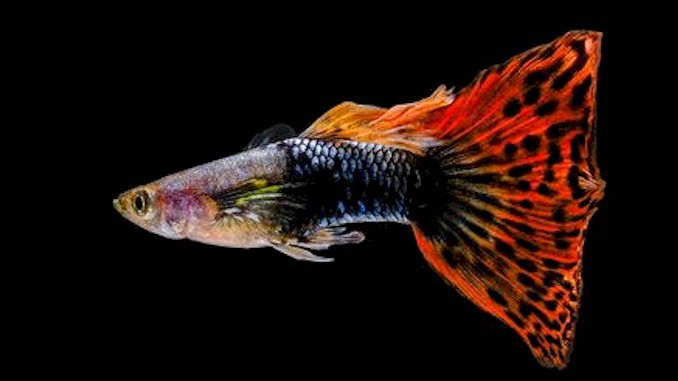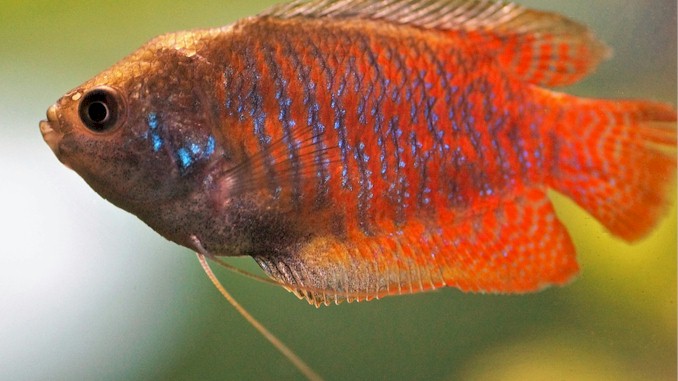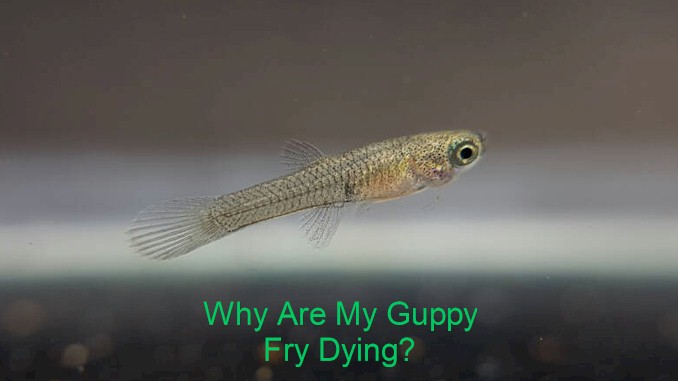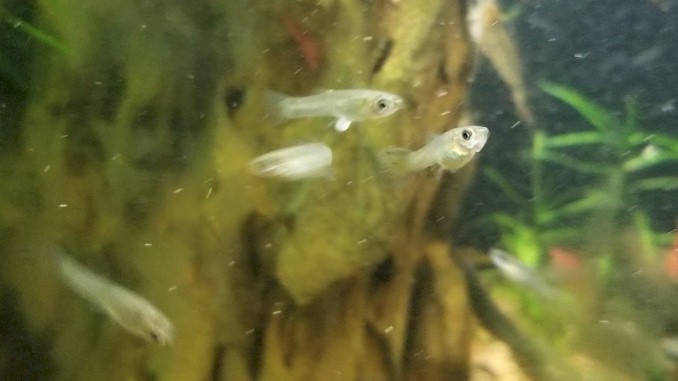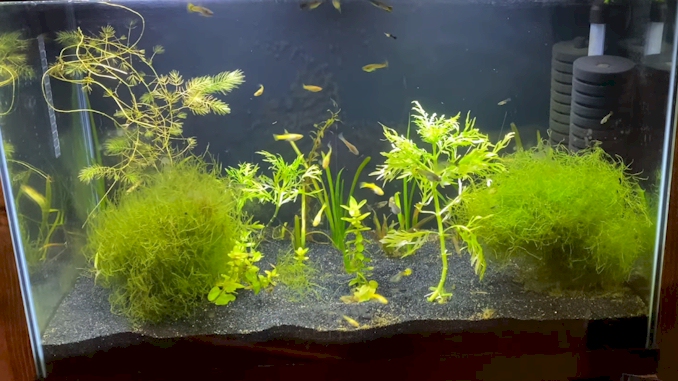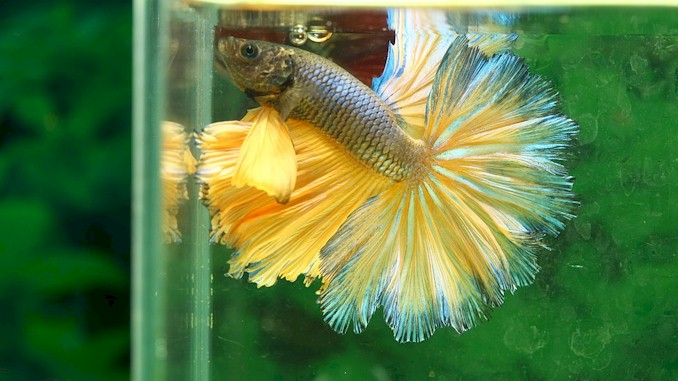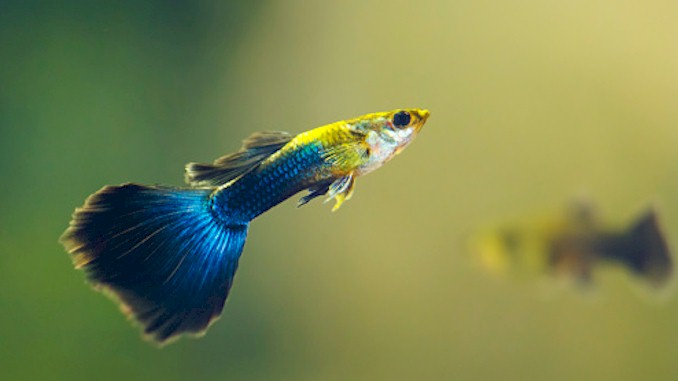The Amazing World Of Crossbreed Guppy: What You Need To Know
If you are fascinated by the amazing world of crossbreed guppy, you are not alone. Crossbreed guppy are hybrid fish that result from mating different types of guppies or other fish from the same family. They can have stunning colors and patterns that make them stand out in any aquarium. However, crossbreeding guppies is not as easy as it sounds. It requires special care and attention from the breeder, and it comes with some challenges and risks. In this blog post, I will share with you everything you need to know about the world of crossbreed guppies. Whether you are a beginner or an expert, I hope you will find this post helpful and informative.
Crossbreed guppy are hybrid fish that result from mating different types of guppies or other fish from the same family, the Poeciliidae family. The most common fish that guppies crossbreed with are mollies, which have similar characteristics and belong to the same genus as guppies . Crossbreed guppy can have stunning colors and patterns that make them stand out in any aquarium. However, crossbreeding guppies is not as easy as it sounds. It requires special care and attention from the breeder, and it comes with some challenges and risks.
There’s more! In this comprehensive guide to crossbreed guppies, I will address some of the most common questions and concerns about these fascinating fish. Discover what fish can crossbreed with guppies and explore the different possibilities. Learn how to crossbreed guppies with tips and techniques for successful breeding. Explore whether guppies can crossbreed with molly, platies, and swordtails, and what you need to know about each potential hybrid. And finally, dive into the world of guppy genetics and hybridization to understand how different species can interbreed. With this information, you’ll be equipped to take your crossbreed guppy hobby to the next level. So keep reading to unlock the secrets of these amazing fish!
What Fish Can Guppy Crossbreed With? Exploring the Possibilities
Guppies are known for their ability to crossbreed with various fish species, creating unique and beautiful hybrids. The possibilities are nearly endless, but some species are more compatible with guppies than others. Let’s explore some of the fish that guppies can crossbreed with and the resulting hybrids.
One of the most common fish that guppies can crossbreed with is the Endler’s livebearer. Endler’s livebearers are a closely related species to the guppy, and the resulting hybrids are often referred to as “Gupplenders.” Gupplenders are highly sought after by aquarium hobbyists for their vibrant colors and patterns.
Another fish that guppies can crossbreed with is the mosquito fish. Mosquito fish are small and hardy, making them a great addition to any guppy tank. The resulting hybrids are typically larger and hardier than guppies and come in a range of colors and patterns.
Guppies can also crossbreed with other species of livebearers, including mollies, platies, and swordtails. However, the resulting hybrids may have genetic abnormalities or health issues, so it’s important to be cautious when attempting to breed these species.
In addition to livebearers, guppies can also crossbreed with certain species of tetras, such as neon tetras and cardinal tetras. The resulting hybrids are often called “Guptras” and are known for their bright colors and unique patterns.
It’s worth noting that not all fish species are compatible with guppies, and attempting to crossbreed incompatible species can lead to health problems and genetic abnormalities. It’s important to research and understand the compatibility of different species before attempting to breed them.
Now we have learned that guppies can crossbreed with a variety of fish species, including Endler’s livebearers, mosquito fish, mollies, platies, swordtails, and certain species of tetras. However, it’s crucial to research and understand the compatibility of different species before attempting to breed them. With the right knowledge and caution, hobbyists can create unique and beautiful hybrid fish that are sure to impress.
How to Crossbreed Guppies: Tips and Techniques for Successful Breeding
Breeding guppies can be a rewarding and enjoyable hobby, but it requires careful attention to detail and the right techniques. Here are some tips and techniques for successful breeding:
- Choose healthy breeding stock: When selecting guppies for breeding, it’s important to choose healthy, disease-free fish with vibrant colors and patterns. Avoid fish with deformities or signs of illness, as these traits may be passed on to their offspring.
- Provide optimal living conditions: Guppies thrive in warm, clean water with plenty of hiding places and plants. Ensure that the breeding tank is properly cycled and that water parameters are consistent.
- Use a separate breeding tank: To increase the chances of successful breeding, it’s recommended to use a separate breeding tank with a small number of male and female guppies. This will help to minimize aggression and ensure that the breeding process is controlled.
- Use a breeding trap or net: Another option for breeding guppies is to use a breeding trap or net. This allows the female guppy to give birth in a safe and controlled environment, and prevents other fish from eating the newborn fry.
- Feed a varied diet: Guppies require a varied diet to maintain their health and promote successful breeding. Offer a mix of high-quality flakes, frozen or live foods, and vegetables to provide a balanced diet.
- Observe and monitor the breeding process: It’s important to observe the breeding process carefully and monitor the fry for signs of illness or deformities. Remove any sick or deformed fry to prevent them from affecting the health of the rest of the brood.
By following these tips and techniques, hobbyists can increase their chances of successful breeding and create healthy and vibrant guppy fry. Remember to be patient and persistent, as breeding guppies can be a long and rewarding process.
Can Guppy and Molly Crossbreed? Understanding the Differences and Similarities
Guppies and mollies are both popular freshwater fish that share many similarities, but can they crossbreed? The short answer is yes, guppies and mollies can crossbreed, but there are some important differences and similarities to consider.
One key difference between guppies and mollies is their natural habitat. Guppies are native to the warm waters of South America, while mollies are native to the brackish waters of Central America. This difference in habitat can affect their compatibility for crossbreeding.
In general, crossbreeding between guppies and mollies is possible, but not always successful. The resulting offspring, known as “muppies,” may have a variety of traits from both parent fish, including color, pattern, and fin shape.
However, there are some important considerations to keep in mind when attempting to crossbreed guppies and mollies. For example, mollies are known to be more aggressive than guppies, so it’s important to monitor their behavior and separate any fish that show signs of aggression.
Another consideration is the potential for genetic defects in the offspring. While crossbreeding can result in unique and interesting fish, it can also increase the risk of genetic defects and health issues. As such, it’s important to carefully consider the risks and benefits of crossbreeding before attempting it.
In addition to these factors, it’s important to keep in mind the different water requirements of guppies and mollies. Guppies prefer warm, soft water with a pH between 7.0 and 8.5, while mollies prefer harder, more alkaline water with a pH between 7.5 and 8.5. It’s important to ensure that the water conditions are suitable for both parent fish before attempting crossbreeding.
So as you see, guppies and mollies can crossbreed, but it’s important to consider the differences and similarities between these two fish before attempting it. Hobbyists should monitor their fish carefully, provide optimal living conditions, and carefully consider the risks and benefits of crossbreeding before attempting it.
Can Guppies Crossbreed with Platies? A Comprehensive Guide
Guppies and platies are both popular freshwater fish that are often kept together in community aquariums. While they may look similar, they are actually different species with distinct characteristics. So, can guppies crossbreed with platies?
The short answer is yes, guppies and platies can crossbreed. The resulting offspring, known as “platy-guppies” or “guppy-platies,” can exhibit a range of traits from both parent fish, including color, pattern, and fin shape. However, the success of crossbreeding between guppies and platies depends on several factors.
First, it’s important to consider the genetic compatibility of the parent fish. Guppies and platies belong to different genera, but they are both members of the Poeciliidae family. This means that they share some genetic similarities that make crossbreeding possible. However, there may also be genetic differences that can affect the viability and health of the offspring.
Another important factor to consider is the behavior and aggression of the parent fish. Platies are generally peaceful and easy-going, while guppies can be more active and sometimes aggressive. If there is a size difference between the parent fish, there may also be a risk of predation or injury.
When attempting to crossbreed guppies and platies, it’s important to provide optimal living conditions for both parent fish. Guppies prefer warm, soft water with a pH between 7.0 and 8.5, while platies prefer harder, more alkaline water with a pH between 7.2 and 8.2. It’s important to ensure that the water conditions are suitable for both parent fish before attempting crossbreeding.
In addition, it’s important to consider the potential risks and benefits of crossbreeding. While crossbreeding can result in unique and interesting fish, it can also increase the risk of genetic defects and health issues. As such, it’s important to carefully consider the risks and benefits of crossbreeding before attempting it.
To sum up, guppies and platies can crossbreed, but the success of crossbreeding depends on several factors, including genetic compatibility, behavior, and living conditions. Hobbyists should carefully consider these factors and the potential risks and benefits before attempting to crossbreed guppies and platies.
Can Guppies Crossbreed with Swordtails? What You Need to Know
If you’re interested in breeding fish, you may have wondered if guppies can crossbreed with swordtails. The good news is that the answer is yes, they can! Guppies and swordtails belong to the same family, Poeciliidae, and are known for their hardiness and ease of care. Crossbreeding them can produce some beautiful and unique offspring, but there are some important things to keep in mind.
First, it’s important to ensure that the parent fish are healthy and well cared for. This includes providing them with a clean and well-maintained tank, a balanced diet, and appropriate water parameters. When selecting parent fish, it’s best to choose healthy and strong specimens with desirable traits, such as bright colors or long fins.
To successfully crossbreed guppies and swordtails, it’s important to understand their breeding behaviors. Swordtails are livebearers, meaning that they give birth to live young, while guppies are also livebearers but can also lay eggs. In the wild, swordtails and guppies mate during the rainy season, and the male fish will use their gonopodium, a modified anal fin, to inseminate the female.
To breed guppies and swordtails, you can either allow them to mate naturally in a community tank or set up a separate breeding tank. If you choose to breed them in a community tank, it’s important to ensure that the tank is large enough and that there are plenty of hiding places for the female fish to retreat to after mating. You should also be prepared to separate the pregnant female fish from the rest of the tank when they are ready to give birth, as other fish may try to eat the newborns.
In a separate breeding tank, you can control the breeding process more closely. This can involve using a breeding trap or a breeding net to separate the female fish once they are pregnant, or setting up a dedicated breeding tank with suitable hiding places for the female fish. It’s important to ensure that the water conditions are suitable for both the parent fish and the newborns, and that the tank is well-maintained to prevent any potential health issues.
Overall, breeding guppies and swordtails can be a fun and rewarding experience for fish enthusiasts. By understanding their breeding behaviors and providing them with the proper care and conditions, you can produce some beautiful and unique offspring that are sure to impress.
Do Guppy Species Interbreed? A Look into Guppy Genetics and Hybridization
Guppy breeding has been a popular hobby among aquarium enthusiasts for many years, and one of the reasons for this is their ability to hybridize with different guppy species. The breeding process can produce interesting and unique offspring with diverse color patterns and fin shapes.
To understand the genetics behind guppy hybridization, it’s important to first understand the different types of guppy species. Guppies can be divided into two main categories: wild-type and domesticated. Wild-type guppies have evolved in their natural habitats and have distinct characteristics, such as a duller coloration and smaller size. Domesticated guppies, on the other hand, have been selectively bred in captivity for their vibrant colors and larger size.
When it comes to hybridization, domesticated guppies are often bred with different strains or colors of guppies to create new and interesting offspring. The genetics behind this process can be complex, but a basic understanding of guppy inheritance patterns can be helpful in predicting the characteristics of the offspring.
One of the key factors in guppy hybridization is the presence of dominant and recessive genes. Dominant genes are expressed in the offspring even if they only come from one parent, while recessive genes are only expressed if they come from both parents. Understanding which traits are dominant and recessive can help predict the appearance of the offspring.
Another important consideration is the compatibility of the different guppy species. While some species can interbreed, others may not be compatible due to differences in chromosome number or other genetic factors. It’s important to research and carefully choose the guppy species to be bred to avoid any health or genetic issues in the offspring.
To wrap things up, guppy hybridization is a fascinating aspect of guppy breeding that allows for the creation of unique and interesting offspring. By understanding the genetics behind guppy inheritance patterns and the compatibility of different guppy species, breeders can successfully create new strains and colors of guppies. However, it’s important to approach this process with caution and thorough research to avoid any negative consequences.
How to handle some of the common issues with crossbreed guppies?
Breeding crossbreed guppies can be an exciting and rewarding experience, but it’s not without its challenges. Here are some of the common issues that can arise during the breeding process, and how to handle them:
- Inbreeding: Inbreeding can lead to a decline in the health and quality of your guppies over time. To prevent this, it’s important to introduce new genetic material to your breeding stock regularly. You can do this by adding new guppies to your tank or by swapping guppies with other breeders.
- Disease: Disease can spread quickly among guppies, especially in crowded tanks. To prevent the spread of disease, quarantine new fish before adding them to your tank, keep your tank clean, and maintain good water quality.
- Aggression: Aggression can occur between male guppies, particularly during mating season. To prevent aggression, make sure there are enough females in your tank to balance out the males, and provide plenty of hiding places and plants to break up the line of sight.
- Crossbreeding: While crossbreeding can lead to some beautiful and unique guppies, it can also lead to health issues and genetic defects. To avoid this, it’s important to only breed guppies with similar traits and to avoid breeding closely related guppies.
- Overbreeding: Breeding too many guppies at once can lead to overcrowding and health issues. To prevent this, it’s important to limit the number of breeding pairs in your tank and to only breed when necessary.
- Poor breeding results: Sometimes breeding results may not meet your expectations, leading to disappointment. To avoid this, it’s important to research and understand the breeding process and to have realistic expectations.
By understanding and managing these common issues, you can increase your chances of successfully breeding healthy and beautiful crossbreed guppies.
Related Questions:
Can guppies get pregnant from multiple males? Yes, guppies are capable of getting pregnant from multiple males. Female guppies have the ability to store sperm from multiple matings and use it to fertilize their eggs over time. This means that the offspring from a single brood can have multiple fathers, which is known as polyandry. This reproductive strategy can increase genetic diversity and improve the chances of survival for the offspring, as they may inherit beneficial traits from multiple males. However, it can also lead to competition between the males, as they try to ensure their genes are passed on to the next generation.
Can fancy guppies breed with regular guppies? Yes, fancy guppies can breed with regular guppies because they are the same species (Poecilia reticulata). However, the resulting offspring may exhibit a mix of traits from both parents, which can be unpredictable. This means that some of the offspring may have traits similar to the fancy guppy, while others may resemble the regular guppy. Additionally, inbreeding can occur if the same fish are bred repeatedly, which can lead to genetic issues in the offspring. As with any breeding, it’s important to carefully consider the genetics of the parents and monitor the offspring for any abnormalities.

